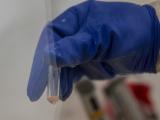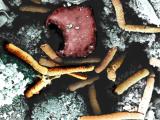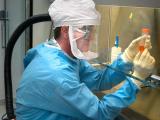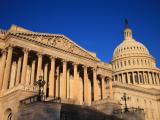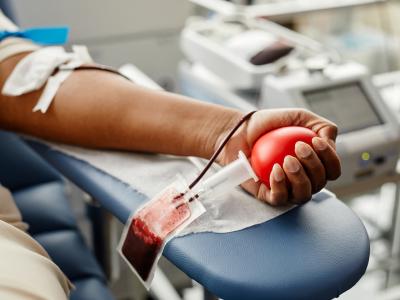Sep 22, 2011 (CIDRAP News) – A federal working group recommends that the US government assess the safety and immunogenicity of anthrax vaccine in children before an attack with Bacillus anthracis occurs rather than after, according to a presentation today before the National Biodefense Science Board (NBSB).
Researchers are more familiar with the vaccine's safety and immunogencity in adults, because it has been used in about 2.5 million military members. However, no studies have been conducted in children, who make up 25% of the US population, though federal bioterror response plans call for both groups to receive three doses of the vaccine, alongside antibiotic prophylaxis, after an anthrax attack.
Anthrax vaccination is intended to provide prolonged protection against dormant spores that can germinate after antibiotic prophylaxis ends. The vaccine has not been licensed for postexposure prophylaxis for either adults or children.
After an anthrax attack, it would be given to potentially exposed adults under an emergency use authorization (EUA) and to children, with parent or guardian consent, under an investigational new drug protocol.
In April Dr. Nicole Lurie, Assistant Secretary for Preparedness and Response (ASPR) at the US Department of Health and Human Services, asked the NBSB's anthrax working group to explore complex scientific, ethical, legal, and regulatory issues related to pediatric vaccination. The working group held a public engagement meeting in July, and today its members presented an outline of their draft report to the full NBSB committee for discussion.
John Parker, MD, senior vice president at Scientific Applications International Corp., in Alexandria, Va., and co-chair of the working group, told the full committee today that in the event of an anthrax attack, federal officials don't have any information for parents on safety, immunogenicity, or side effects.
He said in researching the issues, the group weighed the prospect of knowing something about pediatric use of the vaccine ahead of time against taking a subgroup to study safety and immunogenicity in kids who are vaccinated after an anthrax attack.
He emphasized that conducting research in children is typically only done under extraordinary circumstances when there is a strong possibility of a benefit, such as with cancer drugs. Kids represent a special population that has numerous protections in place that pertain to medical research, Parker said. Studying the anthrax vaccine in children wouldn't have a major benefit to individual children before a bioterror release, but the benefits could extend to thousands of children after such an event.
NBSB members raised concerns about how difficult it could be to tease out the effects of the antibiotic and vaccine if the study of the anthrax vaccine in children took place during prophylaxis after an attack. Some also said it would be difficult to include a control group in a bioterror disaster scenario.
The working group recommends that the government flesh out plans to test the anthrax vaccine in children before a bioterror event, among small groups starting with oldest children first.
The plan would outline the data to be collected, have enough participants to ensure reliable data, and have detailed information for parents. If the government's protocol doesn't clear institutional review boards, the group recommends that the study in kids take place during the response phase of an anthrax attack.
During the last part of the NBSB's discussion today, members of the public weighed in on the working group's draft recommendations, and all opposed conducting studies of the vaccine in children.
The Alliance for Human Research Protection, a nonprofit network involved with human rights issues related to using people as research subjects, submitted a statement opposing the proposed recommendations to study the anthrax vaccine in children. In it the group asserts that there is no evidence of an anthrax risk to kids and that the government's interest in the vaccine is influenced by commercial stakes.
Maryl Nass, MD, an internist who has studied anthrax vaccine injuries and bioterror issues, told the group that the time frame for late anthrax spore germination after human exposure is unclear and that federal officials could suggest longer antibiotic therapy to extend protection, rather than immunize people against the disease. She also pointed to problems with anthrax vaccine compliance, which she speculated could be due to adverse events from the vaccine. Six doses are given over 18 months for preexposure prophylaxis, with three doses over 4 weeks for postexposure protection.
The working group's next steps are to revise its report, based on today's discussion with the full board. Their report also said they expect to have final deliberations and take a final vote in a conference call with the board at the end of October.
See also:
Sep NBSB pediatric anthrax vaccine working group draft report executive summary
Apr 28 CIDRAP News Scan



